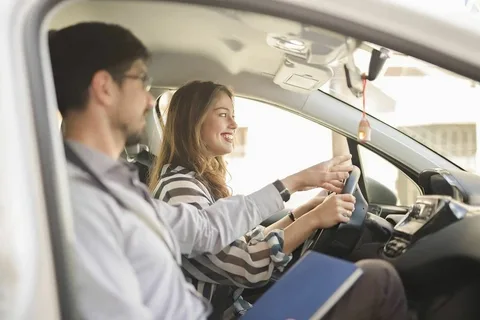
Choosing to learn how to drive is a big decision—but just as important is deciding whether to learn in a manual or automatic car. In a city like Oxford, where a mix of historic roads and modern traffic systems can pose unique challenges, this choice can have a real impact on your learning experience.
Whether you’re a student, young professional, or simply eager to gain independence, understanding the differences between manual and automatic driving lessons in Oxford will help you make the right decision for your needs. Let’s explore both options, consider the pros and cons, and look at how local driving schools in Oxford can support your journey whichever path you choose.
Understanding the Key Differences
What Is Manual Driving?
Manual cars require the driver to operate a gear stick and clutch pedal, offering more control over how the car behaves. This traditional method of driving is still widely used across the UK.
What Is Automatic Driving?
Automatic cars handle gear changes on their own, which means the driver only needs to focus on accelerating, braking, and steering. For many, this simplifies the learning process and can reduce stress, especially in urban areas with stop-start traffic.
Manual Driving Lessons in Oxford
Pros of Learning Manual
-
Wider choice of vehicles: Once you pass your test in a manual car, you’re legally allowed to drive both manual and automatic cars.
-
Potentially lower costs: Manual cars are often less expensive to buy and repair.
-
Greater control: Manual cars can offer better control on hills, in snow, or in tricky traffic situations.
Challenges in Oxford
Oxford’s roads can be narrow, and traffic can be heavy during peak hours. Learning clutch control and gear changes while navigating city driving may be difficult at first, but driving schools in Oxford are experienced in teaching new drivers how to manage these situations.
For those who plan to drive long-term or outside the city, manual driving lessons in Oxford offer a broader skill set.
Automatic Driving Lessons in Oxford
Why More Learners Are Choosing Automatic
Automatic cars are becoming more popular in the UK, and Oxford is no exception. Many learners choose this option because:
-
It’s easier to focus on the road: Without needing to manage gears and clutch, learners can concentrate more on steering, road signs, and traffic.
-
Quicker learning curve: Many students pass their test in fewer lessons.
-
Ideal for city driving: In stop-start traffic, an automatic can be more convenient and less tiring.
Things to Consider
If you pass your test in an automatic car, you are only legally permitted to drive automatic vehicles. Switching to a manual later would require additional lessons and a new test. That’s why it’s important to consider your long-term needs before deciding.
Many driving schools in Oxford offer both manual and automatic options, so it’s worth discussing your lifestyle and goals with an instructor before making your choice.
Choosing the Right Option for You
Lifestyle and Driving Habits
-
Do you plan to drive in rural areas or abroad? Manual cars may be more common.
-
Will you mainly drive around Oxford? Automatic lessons could make city driving less stressful.
-
Do you have any physical limitations or learning difficulties? Automatic vehicles are often easier for those with coordination or mobility challenges.
Budget and Time
-
Manual lessons may take longer due to the added complexity of learning gear control, but they offer greater flexibility in the long run.
-
Automatic lessons may reduce the number of sessions needed, potentially lowering overall costs, though automatic cars tend to be more expensive to buy or hire.
Speak to a few driving schools in Oxford to compare prices and lesson formats. Some schools even offer a trial lesson in both types of cars to help you decide.
What Local Instructors Say
Experienced instructors offering driving lessons in Oxford often report that automatic learners gain confidence quickly, especially in busy areas like Headington or around the ring road. However, they also emphasise the long-term value of mastering a manual gearbox, especially for drivers looking to travel across the UK or drive for work.
Impact on Your Driving Test
Test Difficulty
The practical driving test is essentially the same for both types of vehicles, though many learners find the automatic test less demanding due to the reduced complexity.
Pass Rates
Statistically, automatic learners sometimes have slightly higher pass rates, but the difference is often linked to individual readiness and not the vehicle type alone. Driving schools in Oxford generally prepare students thoroughly for both test types.
The Role of Driving Schools in Oxford
Choosing the right school is as important as deciding between manual and automatic. A good driving school will:
-
Offer qualified, DVSA-approved instructors
-
Be flexible with lesson times to fit around your work or study
-
Provide clear guidance on the pros and cons of each option
Reputable driving schools in Oxford often specialise in helping learners find the best route based on their confidence, goals, and availability.
Conclusion
There’s no one-size-fits-all answer when it comes to manual vs automatic driving lessons in Oxford. Your choice depends on your comfort level, future plans, and personal preferences. Manual lessons offer more flexibility for the future, while automatic lessons may provide a quicker, simpler learning experience—especially in urban environments like Oxford.
Whichever you choose, the most important thing is to learn with a skilled instructor who understands the local roads and can help you build the confidence and experience you need to become a safe, capable driver. With several reliable driving schools in Oxford to choose from, you can be sure there’s an option that’s right for you.




